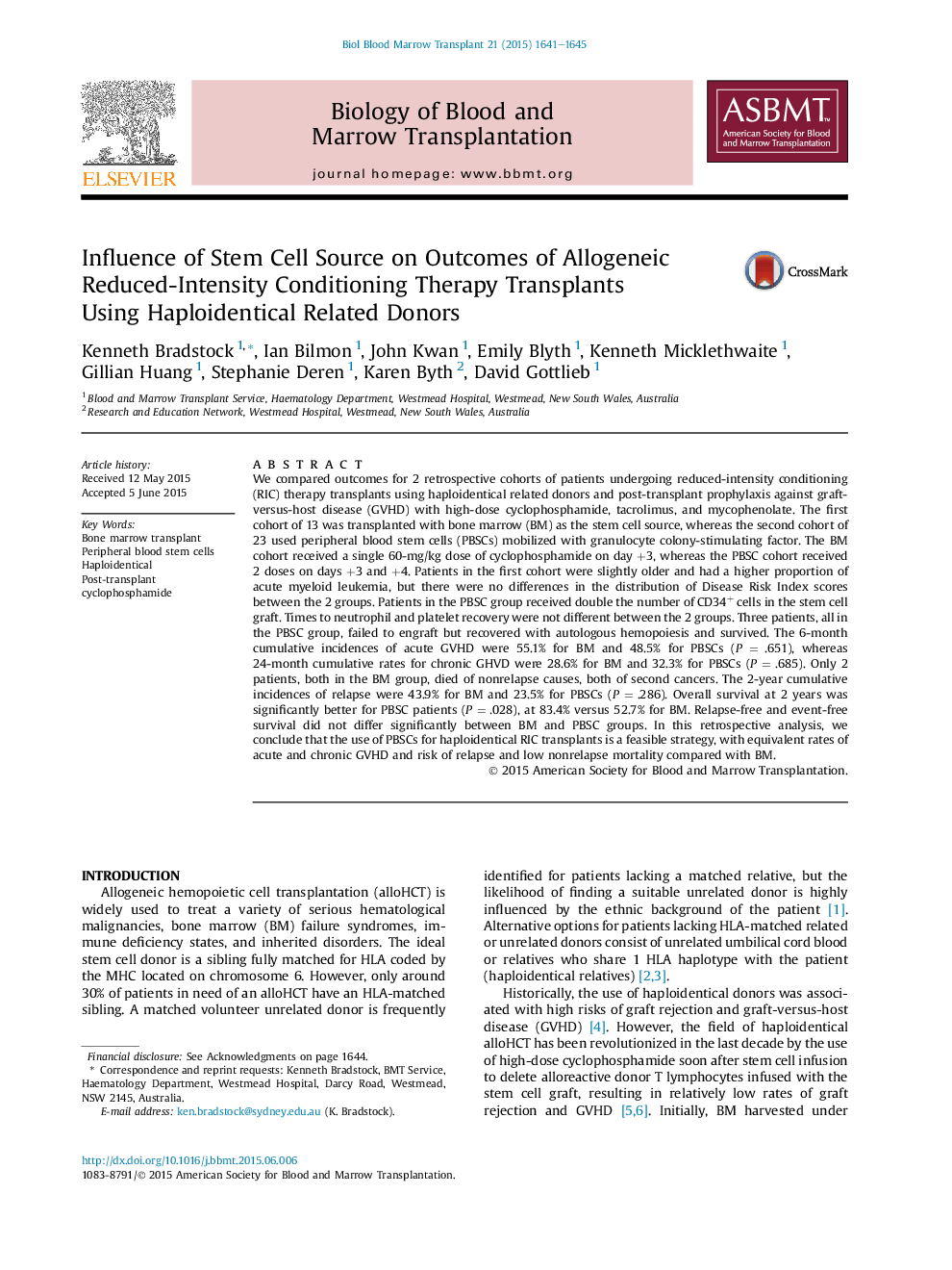| Article ID | Journal | Published Year | Pages | File Type |
|---|---|---|---|---|
| 2101836 | Biology of Blood and Marrow Transplantation | 2015 | 5 Pages |
•Two cohorts of patients received haploidentical related RIC transplants using either BM or PBSCs.•Rates of engraftment, acute and chronic GVHD, and relapse were similar between the 2 groups.•Overall survival was better in the PBSC group.•The use of PBSCs appears to be an effective strategy for haploidentical RIC transplants.
We compared outcomes for 2 retrospective cohorts of patients undergoing reduced-intensity conditioning (RIC) therapy transplants using haploidentical related donors and post-transplant prophylaxis against graft-versus-host disease (GVHD) with high-dose cyclophosphamide, tacrolimus, and mycophenolate. The first cohort of 13 was transplanted with bone marrow (BM) as the stem cell source, whereas the second cohort of 23 used peripheral blood stem cells (PBSCs) mobilized with granulocyte colony-stimulating factor. The BM cohort received a single 60-mg/kg dose of cyclophosphamide on day +3, whereas the PBSC cohort received 2 doses on days +3 and +4. Patients in the first cohort were slightly older and had a higher proportion of acute myeloid leukemia, but there were no differences in the distribution of Disease Risk Index scores between the 2 groups. Patients in the PBSC group received double the number of CD34+ cells in the stem cell graft. Times to neutrophil and platelet recovery were not different between the 2 groups. Three patients, all in the PBSC group, failed to engraft but recovered with autologous hemopoiesis and survived. The 6-month cumulative incidences of acute GVHD were 55.1% for BM and 48.5% for PBSCs (P = .651), whereas 24-month cumulative rates for chronic GHVD were 28.6% for BM and 32.3% for PBSCs (P = .685). Only 2 patients, both in the BM group, died of nonrelapse causes, both of second cancers. The 2-year cumulative incidences of relapse were 43.9% for BM and 23.5% for PBSCs (P = .286). Overall survival at 2 years was significantly better for PBSC patients (P = .028), at 83.4% versus 52.7% for BM. Relapse-free and event-free survival did not differ significantly between BM and PBSC groups. In this retrospective analysis, we conclude that the use of PBSCs for haploidentical RIC transplants is a feasible strategy, with equivalent rates of acute and chronic GVHD and risk of relapse and low nonrelapse mortality compared with BM.
